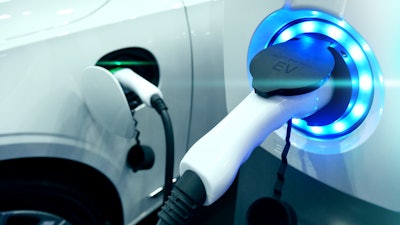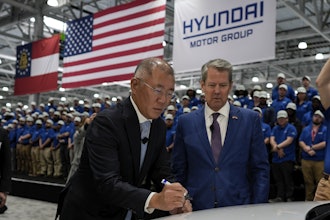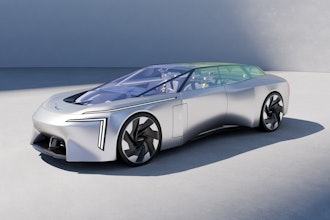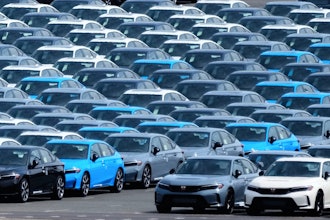
On the heels of the joint announcement from GM and Nikola about their deal to build the next generation of electric trucks, IEN tapped Maziar Adl, CTO of product decision analytics platform, Gocious, for a Q&A to discuss the significance of the announcement for auto manufacturing, how companies need to work together to make the manufacturing process seamless though the next digital revolution, and what this means for the future of the industry.
Q: Can you briefly explain what this news means for the larger manufacturing ecosystem and how you think this will play out within the coming months?
Maziar Adl, Gocious: Over the past few years, a race has begun within the auto industry to quickly develop vehicles powered by energies other than fossil fuel. While not a new effort, manufacturers are now speeding up processes to bring green alternatives to life because of rapid advancements in technology and new examples of innovators to follow in the space, such as Tesla.
Outside forces are also causing widespread disruption within the larger automotive ecosystem, as governments on a global scale are now putting pressure on manufacturers to expedite the move towards less carbon emissions. Large corporations that have a long history in developing fossil fuel-based engines or cars now need to act fast. Big manufacturing organizations (like GM) are starting to take a closer look at companies that could be promising for the future (like Nikola) to expedite transformation and bring forth a more diversified vehicle lineup. Investments from larger corporations in younger companies with advanced prototypes will be lucrative for continued competition and driving market share.
Q: How do you think that Tesla should prepare to take on this new competitor,?
MA: Once the market becomes saturated with other players producing electric vehicles or alternative energy, consumers will find many more options outside of an industry once solely dominated by Tesla. Every major manufacturer in the auto space will face a massive need to better understand their customers, presenting a requirement for innovation at a rapid rate to maintain status among competitors.
Right now, Tesla is in a unique position as an industry leader in an open field with very little competition. In this situation, the goal is simply to execute that one product successfully and efficiently. Once competitors begin to infiltrate the market and there is a threat to Tesla’s existing customer base, there will be a greater need to give consumers more options to retain interest. This is going to be a huge challenge for many companies, allowing enough flexibility for innovation and implementing new ideas to stay ahead of the pack.
Q: What should companies like GM and Tesla be doing in order to make the manufacturing process more seamless?
MA: There are two sides to making the manufacturing process more seamless: finding better technologies for collaboration and communication, and establishing strategy towards building the product and ensuring it remains fast and flexible once it reaches the customer’s hand.
As companies grow, internal communication and innovation slows down due to the need for alignment across organizations to drive these initiatives. There are also ways to approach customization to speed up the product life cycle.
For example, Tesla has shown that they first sell a platform to consumers, then start installing the features over time by downloading software. Essentially, customers are not really buying a car from Tesla at first, but the hardware, similar to a laptop that Tesla continuously improves, all while giving the customer choices on what they want that hardware to include.
While Tesla has been a prime example of this in the auto industry, Amazon and Google are also great examples of companies that have proven how smaller, multidisciplinary teams give them the autonomy to innovate. Innovation in manufacturing can be difficult due to the capital and cost involved, but the more companies can control that and make it easier for the consumer, the faster and more simplified the process will become.
Q: How do you foresee this deal impacting the future of the auto industry overall?
MA: While Tesla showed the world that electric vehicles can be profitable, auto manufacturers everywhere will continue ramping up their own innovation. It is really exciting to consider the prospect of how each will approach the various angles of production moving forward.
Although Tesla proved the business case, this will be a difficult process for manufacturers adjusting from fossil fuel or car production, that have completely different designs. Patterns have emerged from companies looking to enter the race and gain a head start in market share, which is where companies like Nikola come into play.
Giants like GM or Ford have begun to tap into startups that have spent two to 10 years researching the new technologies and capabilities necessary for broaching a larger platform. By purchasing stakes at these startups, ICE OEMS (combustion engine manufacturers) can actually have their cake and eat it too. These manufacturers can leverage their own innovation, all while utilizing a separate organization with its independent business structure to get them to heightened profitability faster or on-time.
Consider the GM and Nikola deal, for example. Separately, these companies are not as powerful as they will be once joined together. Nikola will bring forth new ideas on how to speed up operations and produce EV cars, while simultaneously taking GM’s capabilities in manufacturing and knowledge to streamline a better process than ever. The question remains, can GM and Nikola identify the best of both worlds and fuse them together to create a new, amazing division? Or will these companies see internal resistance and complications? We can certainly expect amazing things to come from them in the future if they join together with a sense of camaraderie.
Q; How can auto manufacturers combat disruption around the Fourth Industrial Revolution?
MA: The Fourth Industrial Revolution is about opening up and democratizing the information flow, not just between humans, but also between the product and the individuals who analyze the information coming out of those products. With the Industrial Revolution, the companies that can seize that opportunity and turn a massive amount of data into meaningful, actionable information will remain ahead. It is becoming more essential for companies to revolutionize the way information is collected, analyzed and utilized, or run the risk of falling behind.
Q: Gocious recently came out with a survey around complexity and disrupting the product delivery process. How do you think that this is impacting the auto industry specifically?
MA: The manufacturing industry as a whole will continue to face disruption in the coming months. Even after the COVID-19 pandemic has subsided, the way people work will continue to change dramatically and many companies will see a greater need to align on different principles that will define the product offerings.
For example, when working remotely on a manufacturing product, product managers are required to reflect both the voices of the customer and many stakeholders. It has become imperative to align the broader organization around one common definition of the product that is customer-centric (or market-facing), which can ultimately speed up the decision making process.
Our surveys show that at times, 40+ people need to review and approve product definitions prior to production. This means that collaborative tools, cloud tools, and communication tools are becoming more and more important.
Based on the survey results, we found that there are many organizations that are not riding the digital transformation wave. Although 40 percent of manufacturers are considering digital transformation as a solution to shorten product lifecycle, only 10 percent are actually using product definition tools that can help automate, visualize analyze product configurations.
All these disruptions showcase that companies should expedite their digital transformation, move towards more digital solutions that allow for collaboration online, and provide better tools to manage operations. The survey showed that many companies and individuals are seeing the benefits of switching to more advanced tools such as PLM, but the low rate of actual usage at 10 percent seemed surprising to us.
Aside from respondents showing the slow move towards digital transformation, it was surprising to see that the tools companies are currently using to expedite manufacturing processes are mainly the basic productivity tools that are not the exact fit for their area of expertise. 90 percent of those using simple product management solutions are stuck on the low complexity end of the product launch cycle.
This proves that there is massive potential for new products and technologies that can allow for better collaboration and communication on specific tasks, and harnessing new strategies towards building the actual products to meet demand and satisfy customer needs in the most efficient way possible. Manufacturers can utilize these tools to boost software, increase agility and make the manufacturing process more seamless - or run the risk of falling behind.






















